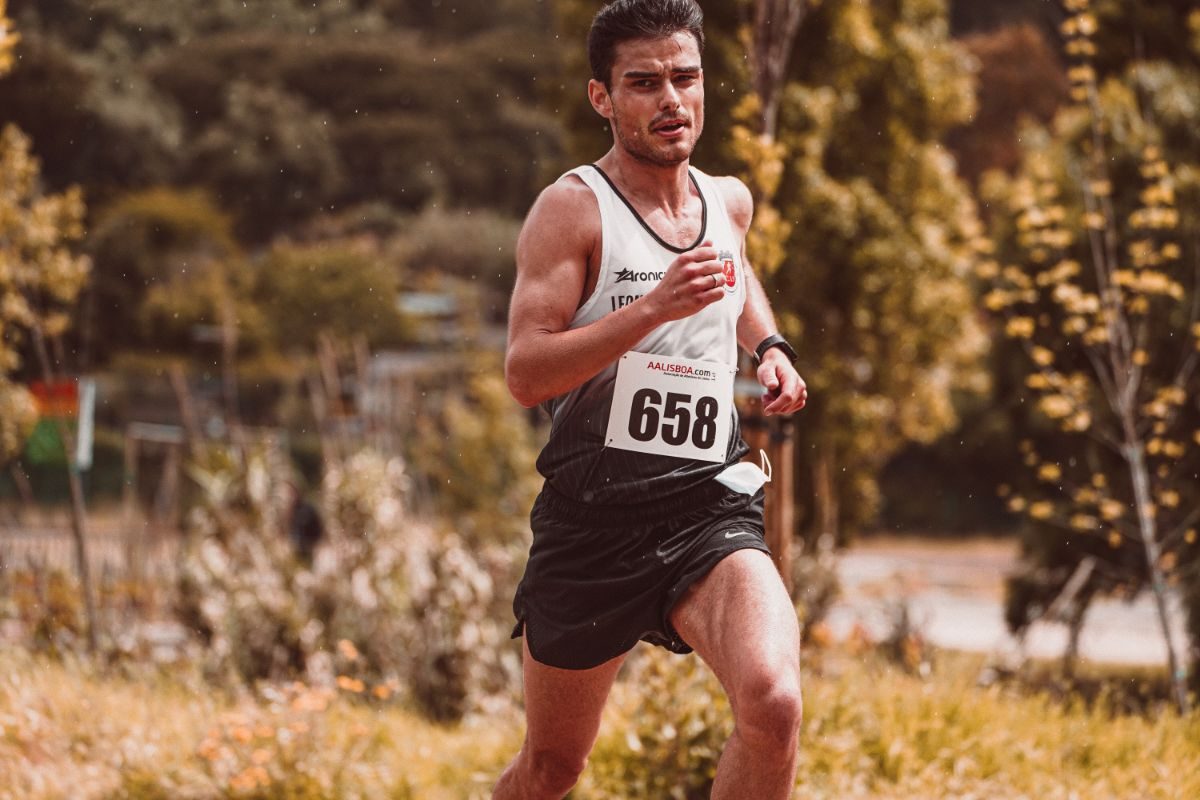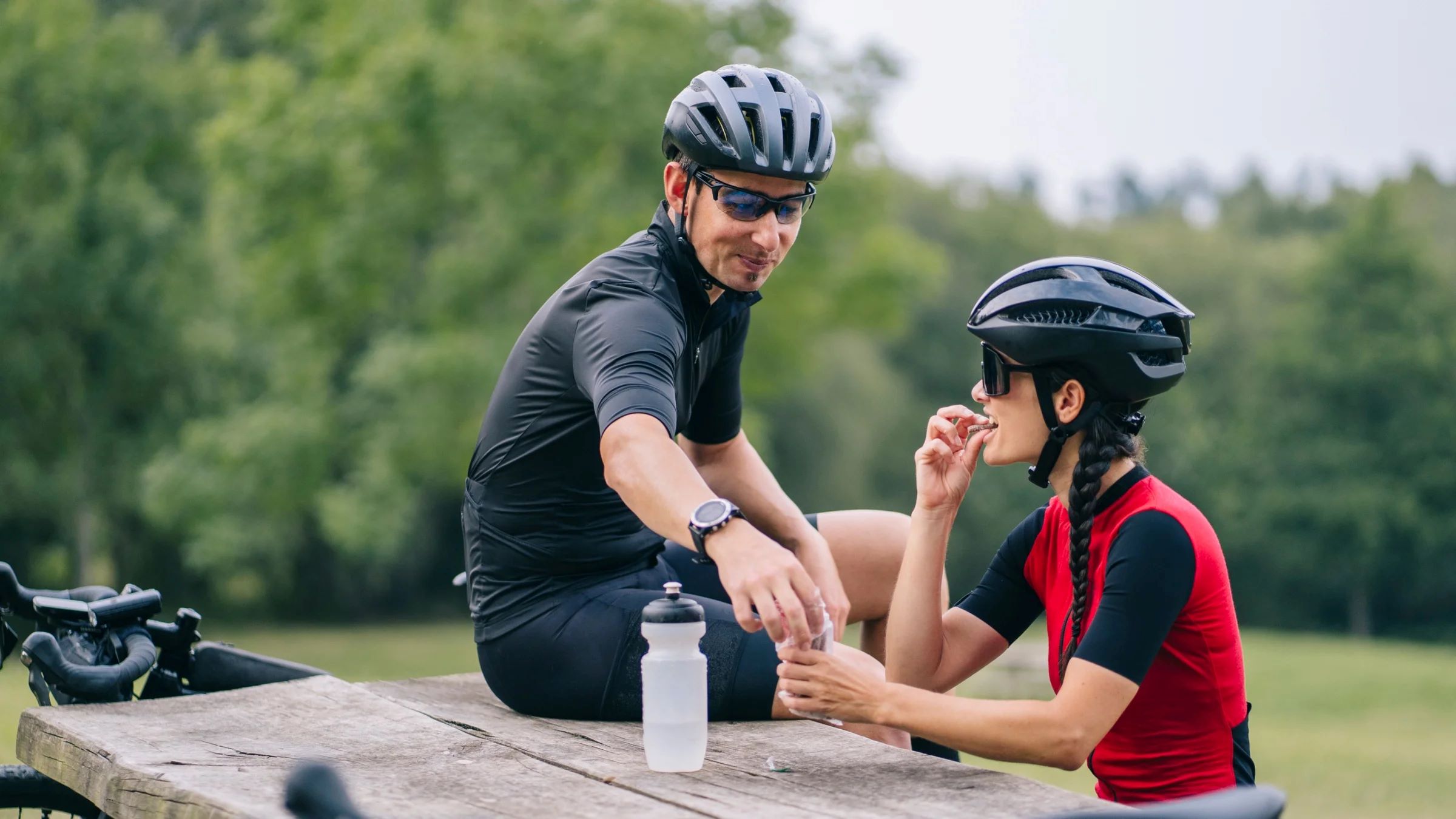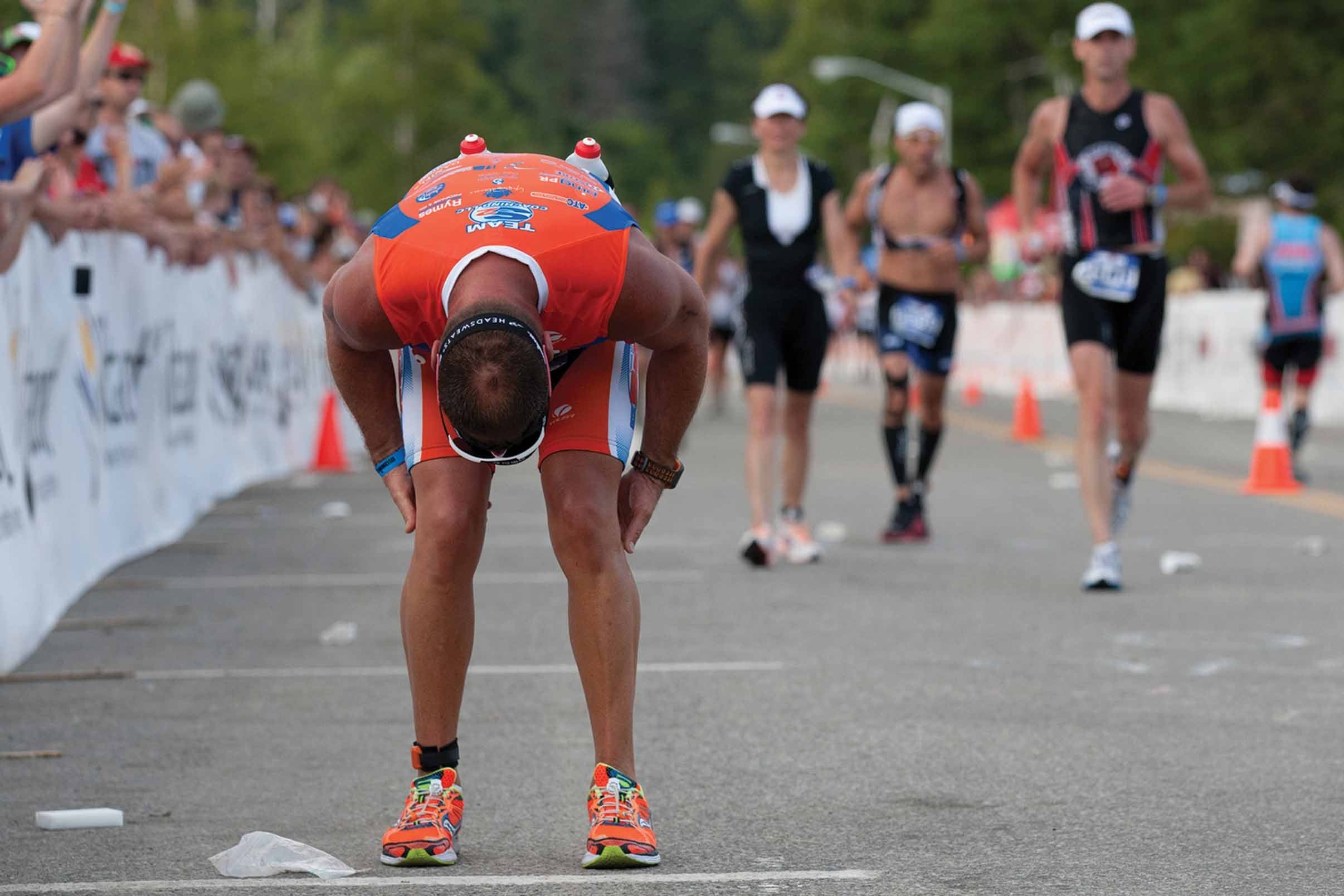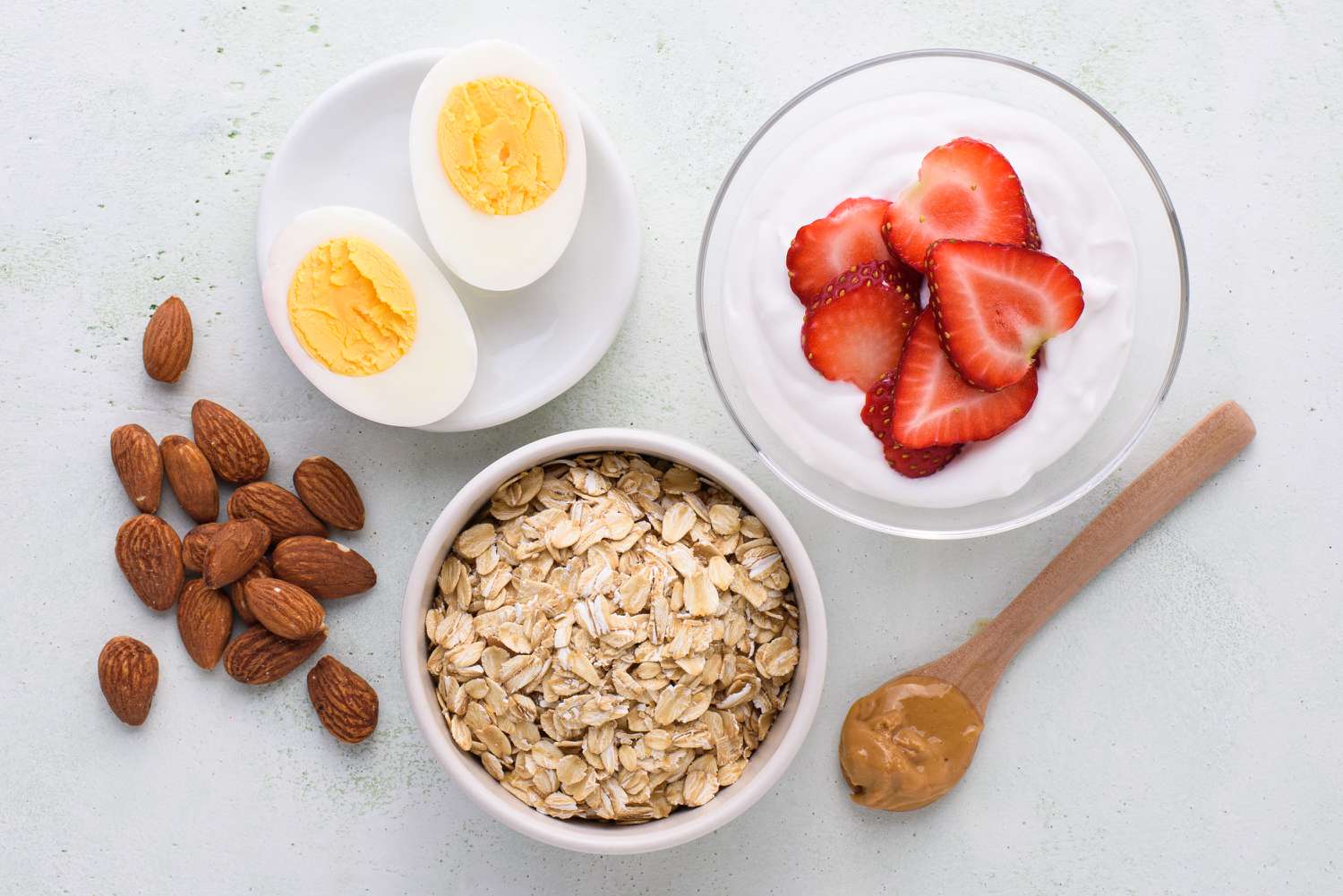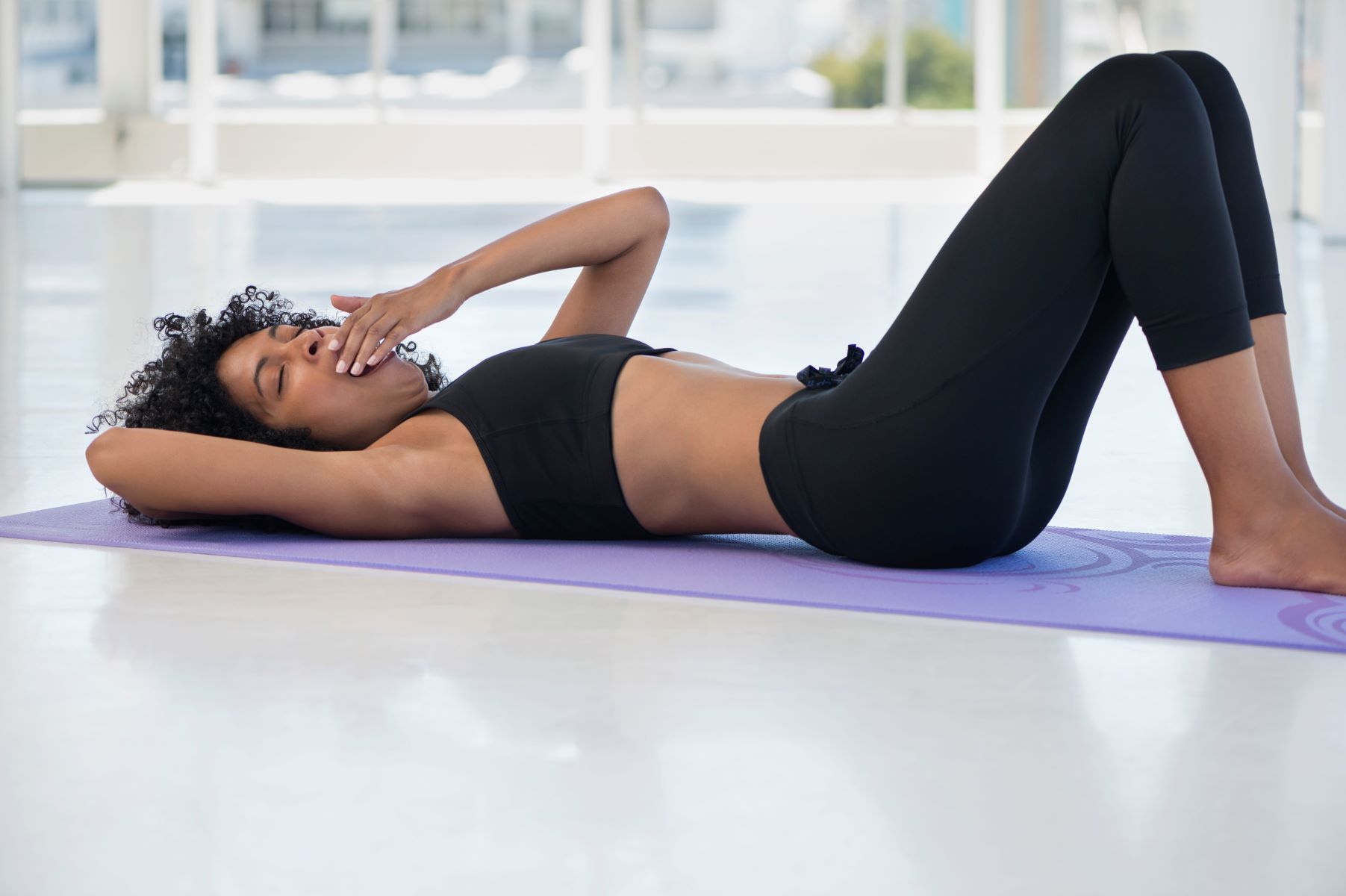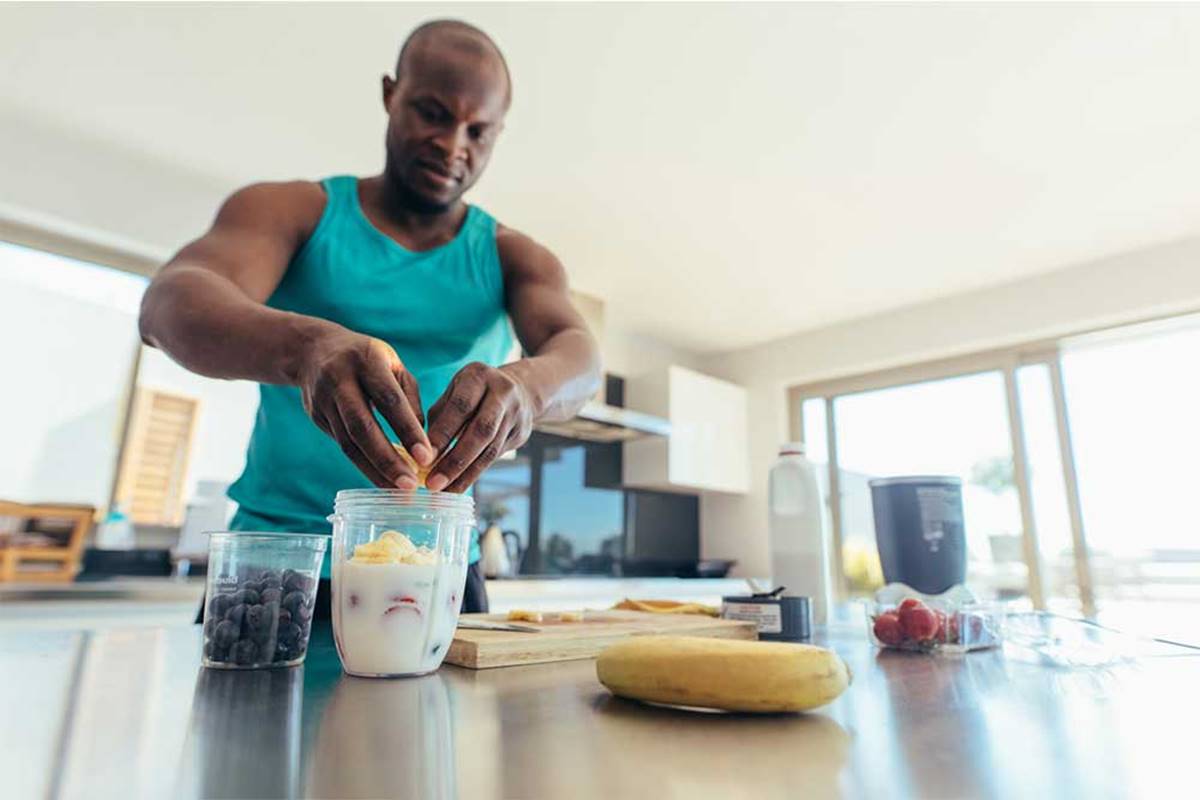Home>Misc>Featured>Why Do We Get Muscle Cramps After Heavy Exercise
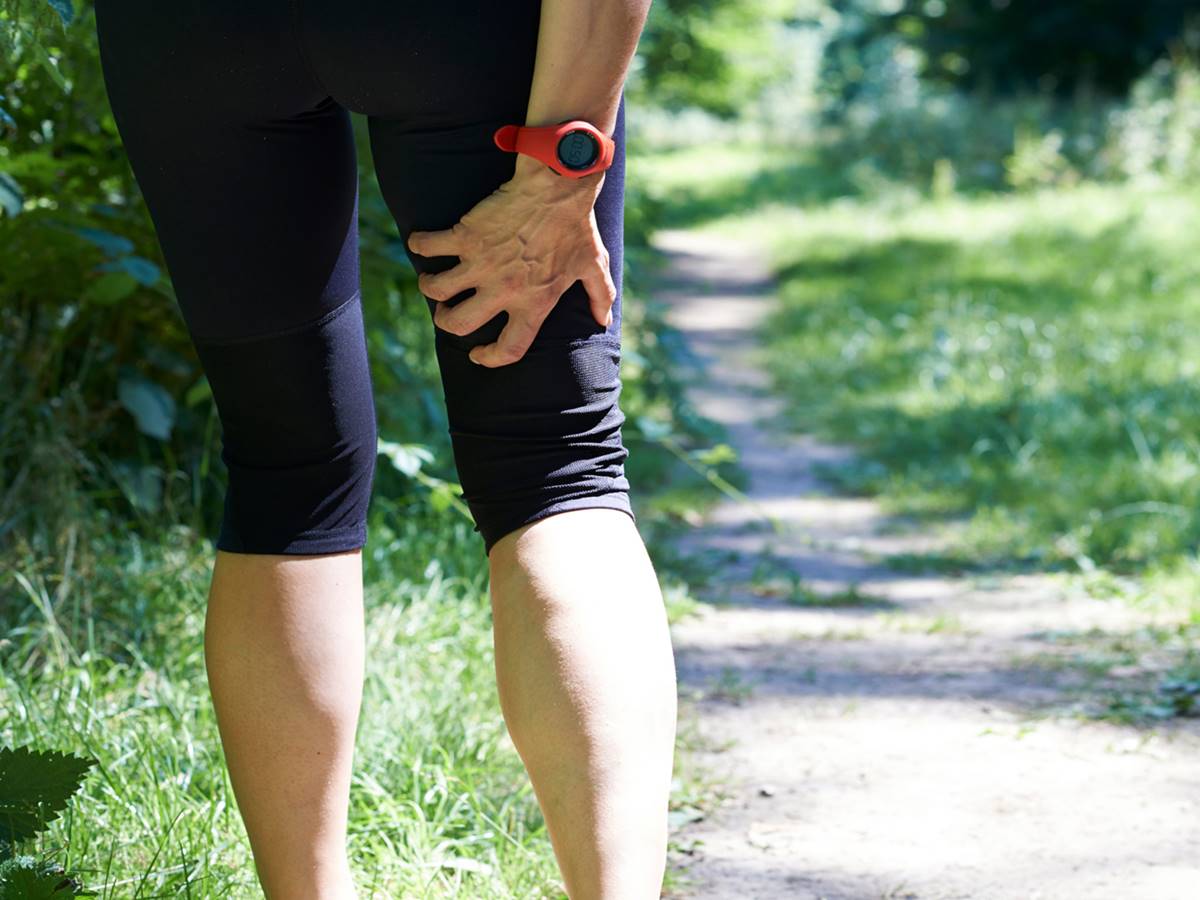

Featured
Why Do We Get Muscle Cramps After Heavy Exercise
Published: October 2, 2023
Learn why we experience muscle cramps after intense workouts and discover effective ways to prevent and manage them. Featured article on exercise-induced muscle cramps.
Introduction
Muscle cramps are a common phenomenon that many people experience after engaging in heavy exercise. After pushing our bodies to their limits, we often find ourselves being plagued by sudden, involuntary contractions of our muscles. These cramps can be not only painful, but also frustrating, as they can interrupt our workout routines or leave us feeling sore and unable to continue with our activities.
Understanding why muscle cramps occur can help us better manage and prevent them. In this article, we will explore the various causes of muscle cramps after heavy exercise and discuss effective strategies to alleviate and avoid them. From dehydration to electrolyte imbalances, overexertion, and poor stretching routines, we will delve into the root causes of these cramps and explore the best ways to address them.
Whether you are a professional athlete or someone who enjoys regular exercise, it’s important to be aware of how muscle cramps can impact your performance and overall well-being. By implementing the right techniques and making certain adjustments to your routine, you can significantly reduce the occurrence of muscle cramps and enhance your exercise experience.
Join us as we delve into the world of muscle cramps and gain a deeper understanding of why they occur after heavy exercise. By the end of this article, you will be armed with the knowledge and tools you need to prevent and treat muscle cramps effectively, allowing you to maximize your workout potential and enjoy a more comfortable and rewarding exercise routine.
What are muscle cramps?
Muscle cramps, also known as muscle spasms, are sudden and involuntary contractions of one or more muscles in the body. These contractions can cause significant discomfort and even pain, making it difficult to continue with physical activities. Muscle cramps commonly occur after engaging in strenuous exercise or activities that put a lot of strain on the muscles.
During a muscle cramp, the affected muscle tightens and contracts forcefully, often leaving individuals unable to move the affected limb or muscle group. Cramps can happen in various parts of the body, such as the legs, arms, abdomen, and back. Although the exact cause of muscle cramps is not always clear, several factors contribute to their occurrence.
One theory suggests that muscle cramps may be caused by an imbalance in the chemicals responsible for muscle contraction and relaxation. These chemicals, known as electrolytes, are essential for the proper functioning of muscles. When there is an imbalance, such as a deficiency in electrolytes like magnesium, potassium, or calcium, the muscles may contract involuntarily, leading to cramps.
Another possible cause of muscle cramps is related to dehydration. When we engage in heavy exercise, especially in hot and humid conditions, our bodies lose fluids through sweat. As a result, the concentration of electrolytes in the body can become imbalanced, triggering muscle cramps.
It is important to note that muscle cramps can also be indicative of an underlying medical condition, such as nerve damage, poor blood circulation, or certain metabolic disorders. In such cases, it is advisable to consult with a healthcare professional for proper diagnosis and treatment.
In the next sections, we will explore in more detail the specific causes of muscle cramps after heavy exercise, including dehydration, electrolyte imbalances, overexertion, and poor stretching routines. By understanding these factors, we can take proactive steps to prevent and manage muscle cramps effectively.
Causes of muscle cramps after heavy exercise
Experiencing muscle cramps after engaging in heavy exercise is a common occurrence for many individuals. These cramps can be attributed to several factors, including dehydration, electrolyte imbalances, overexertion, and poor stretching routines. Understanding these causes can help us effectively manage and prevent muscle cramps.
One of the primary causes of muscle cramps after intense physical activity is dehydration. When we exercise, especially in hot and humid conditions, our bodies lose water through sweat. This loss of fluids can lead to imbalances in electrolyte levels, such as sodium, potassium, and magnesium. These electrolytes play a crucial role in muscle function, and when they are depleted, it can result in muscle cramps.
Electrolyte imbalances are another significant contributing factor to muscle cramps. Low levels of potassium and magnesium, in particular, can increase the likelihood of experiencing cramps. Potassium is essential for maintaining proper muscle contractions, while magnesium is crucial for muscle relaxation. Inadequate amounts of these electrolytes can disrupt the balance, leading to muscle cramps.
Overexertion and muscle fatigue also play a role in the development of muscle cramps. When we push our bodies too hard during intense physical activities, it can cause a buildup of lactic acid in the muscles. This accumulation can lead to muscle fatigue and cramping. Additionally, overworked muscles may become prone to spasms and involuntary contractions, resulting in cramps.
Poor stretching routines or the lack of proper warm-up exercises before engaging in strenuous activities can contribute to muscle cramps. When we fail to properly prepare our muscles for the demands of exercise, they can become more susceptible to cramping during or after the workout. Stretching helps improve muscle flexibility and prepares them for the movements and strain of exercise, reducing the risk of cramps.
It’s important to note that certain individuals may be more prone to muscle cramps due to factors such as age, underlying medical conditions, or certain medications. These individuals should take extra precautions and consult with a healthcare professional for guidance on managing muscle cramps during and after exercise.
By understanding the causes of muscle cramps after heavy exercise, we can take proactive measures to prevent and address these painful disruptions. In the following sections, we will explore various prevention and treatment strategies to help alleviate muscle cramps and create a more comfortable exercise experience.
Dehydration: A common culprit
Dehydration is a significant factor that contributes to muscle cramps after heavy exercise. When we engage in intense physical activity, especially in hot and humid environments, our bodies sweat to regulate body temperature. The loss of fluids through sweat can result in dehydration, a condition where the body doesn’t have enough water to perform its normal functions.
Dehydration disrupts the balance of electrolytes in the body, such as sodium, potassium, and magnesium. These minerals play a crucial role in muscle function and contractility. When electrolyte levels become imbalanced, it can lead to muscle cramps.
One of the key electrolytes affected during dehydration is sodium. Sodium helps maintain fluid balance and is important for nerve and muscle function. When sodium levels plummet due to excessive sweating and inadequate fluid intake, it can lead to muscle cramps and spasms.
Potassium, another essential electrolyte, is also affected by dehydration. Potassium is responsible for maintaining normal muscle contractions. When the body becomes dehydrated, potassium levels can drop, increasing the likelihood of experiencing muscle cramps.
Furthermore, dehydration can impair blood circulation to the muscles, reducing the delivery of oxygen and nutrients they need to function optimally. This lack of oxygen and nutrients can contribute to muscle fatigue and cramping.
To prevent dehydration and minimize the risk of muscle cramps, it is crucial to stay properly hydrated during and after exercise. The American College of Sports Medicine recommends drinking 17-20 ounces of fluid two to three hours before exercise and consuming 7-10 ounces of fluid every 10-20 minutes during exercise. It is important to note that individual hydration needs may vary based on factors like body size, intensity of exercise, and environmental conditions.
Water is the most fundamental and easily accessible form of hydration. However, for strenuous and prolonged exercise, sports drinks containing electrolytes can be beneficial. These drinks replenish both fluids and electrolytes lost through sweat, helping to maintain proper hydration and reducing the risk of muscle cramps.
To ensure adequate hydration, it is important to listen to your body’s thirst signals. Thirst is a good indicator that you need to drink fluids. Additionally, monitoring urine color can provide insights into hydration levels. Pale yellow or clear urine generally indicates proper hydration, while dark-colored urine may suggest dehydration.
By prioritizing proper hydration before, during, and after exercise, we can help prevent muscle cramps caused by dehydration. Next, we will explore the role of electrolyte imbalances and how they contribute to muscle cramps after heavy exercise.
Electrolyte imbalances
Electrolyte imbalances play a significant role in the occurrence of muscle cramps after heavy exercise. Electrolytes, such as potassium, sodium, and magnesium, are essential for proper muscle function and contraction. When these electrolytes are imbalanced, it can lead to muscle cramps and spasms.
Potassium is particularly important for maintaining normal muscle contractions. It helps regulate fluid balance, nerve function, and muscle contractions. When potassium levels in the body are low, a condition known as hypokalemia, it can increase the likelihood of experiencing muscle cramps. Factors such as excessive sweating, inadequate potassium intake, or the use of certain diuretic medications can contribute to low potassium levels.
Sodium, another critical electrolyte, plays a significant role in maintaining fluid balance and nerve function. Low sodium levels, known as hyponatremia, can result from excessive water consumption without adequate salt intake. While hyponatremia is more commonly associated with endurance athletes, it is essential to maintain proper sodium levels to prevent muscle cramps.
Magnesium is involved in over 300 enzymatic reactions in the body, including muscle relaxation and the proper functioning of nerve impulses. Inadequate magnesium levels can lead to muscle cramps and spasms. Factors that can contribute to magnesium deficiency include poor dietary intake, excessive alcohol consumption, and certain medical conditions.
It is important to maintain proper electrolyte balance during and after exercise to minimize the risk of muscle cramps. Besides consuming foods rich in potassium, sodium, and magnesium, such as bananas, spinach, avocados, and nuts, sports drinks and electrolyte supplements can be beneficial, especially during intense physical activities lasting longer than an hour. These beverages help replenish electrolytes lost through sweat and aid in maintaining proper muscle function.
If you suspect an electrolyte imbalance or experience frequent muscle cramps, it is advisable to consult with a healthcare professional for proper diagnosis and guidance. They may recommend specific electrolyte supplements or dietary adjustments to address the imbalance and reduce muscle cramping.
By paying attention to electrolyte balance and ensuring adequate intake of essential minerals, we can minimize the risk of experiencing muscle cramps after heavy exercise. Next, we will explore how overexertion and muscle fatigue contribute to these cramps.
Overexertion and muscle fatigue
Overexertion and muscle fatigue are common culprits when it comes to muscle cramps after heavy exercise. When we push our bodies beyond their limits or engage in prolonged and intense physical activities, it can lead to muscle overuse and fatigue.
During exercise, our muscles undergo stress and strain. This stress activates the release of lactic acid, a byproduct of energy production. When lactic acid accumulates faster than the body can remove it, it can lead to muscle fatigue and cramping.
Overworked muscles are more prone to spasms and involuntary contractions, resulting in muscle cramps. These cramps can occur during exercise or shortly after as the muscles begin to relax and recover. Fatigued muscles may also be more susceptible to injury, highlighting the importance of proper muscle recovery.
Proper rest and recovery play a vital role in preventing muscle fatigue and cramps. It is important to listen to your body and give yourself adequate time to recover between intense workouts. Incorporating rest days into your exercise routine, along with getting enough sleep, allows your muscles to repair and replenish energy stores.
Stretching before and after exercise can also help prevent muscle fatigue and subsequent cramping. Dynamic stretches performed as part of a warm-up routine can help prepare the muscles for the upcoming activity and reduce the risk of cramps. Likewise, static stretching during cool-down can help alleviate muscle tension and aid in the recovery process.
Additionally, incorporating cross-training and varying your exercise routine can help prevent muscle overuse and excessive fatigue. By engaging in different activities that target different muscle groups, you can give specific muscles a chance to recover while still maintaining an active lifestyle.
If you frequently experience muscle cramps due to overexertion and fatigue, it is essential to reassess your exercise intensity and duration. Gradually increasing the intensity and duration of your workouts allows your muscles to adapt and build strength, reducing the likelihood of cramping.
By understanding the impact of overexertion and muscle fatigue on muscle cramps, we can implement strategies to prevent and manage these cramps effectively. Next, we will discuss the role of poor stretching and warm-up routines in the occurrence of muscle cramps after heavy exercise.
Poor stretching and warm-up routines
Poor stretching and inadequate warm-up routines can significantly contribute to muscle cramps after heavy exercise. Stretching and warming up before engaging in physical activity are essential for preparing the muscles and minimizing the risk of cramping.
Stretching helps improve muscle flexibility and range of motion, reducing the likelihood of muscle strain and cramping during exercise. It elongates and relaxes the muscles, allowing them to perform optimally and preventing them from contracting involuntarily.
Performing dynamic stretching as part of a warm-up routine is particularly important. Dynamic stretching involves moving the muscles through a full range of motion, mimicking the movements of the upcoming activity. This helps increase blood flow and warm up the muscles, preparing them for the demands of exercise.
A lack of stretching or inadequate warm-up can lead to muscle imbalances and tightness, making the muscles more susceptible to cramps. When the muscles are not properly warmed up, they may not receive adequate blood flow and nutrients, increasing the risk of cramping.
It is important to incorporate specific stretches targeting the muscles you will be using during your exercise. Focus on major muscle groups, such as the quadriceps, hamstrings, calves, and upper body muscles. Holding each stretch for 15-30 seconds and repeating them a few times can help improve flexibility and reduce muscle tension.
In addition to static stretching before exercise, it is essential to include dynamic movements and light cardiovascular exercises in your warm-up routine. Activities such as jogging in place, jumping jacks, or cycling at a low intensity help increase heart rate, warm up the muscles, and prepare the body for the upcoming workout.
It’s important to note that stretching should also be part of your cool-down routine. After exercise, perform static stretches to maintain muscle flexibility and aid in the recovery process. This helps prevent post-workout muscle tightness and cramping.
By incorporating proper stretching and warm-up routines into your exercise regimen, you can reduce the risk of muscle cramps caused by muscle imbalances, tightness, and inadequate preparation. In the next section, we will explore various prevention and treatment strategies to effectively manage and alleviate muscle cramps after heavy exercise.
Prevention and treatment of muscle cramps
Preventing and effectively treating muscle cramps after heavy exercise is essential for maintaining a comfortable and successful workout routine. By implementing the following strategies, you can reduce the occurrence of muscle cramps and find relief when they do happen.
Hydration: Proper hydration is crucial in preventing muscle cramps. Drink plenty of fluids before, during, and after exercise. Water is essential, but for prolonged or intense exercise, consider sports drinks that replenish electrolytes lost through sweat.
Electrolyte balance: Maintain proper electrolyte balance by consuming foods rich in potassium, sodium, and magnesium. Consider electrolyte supplements if needed, especially during intense or prolonged exercise.
Stretching: Incorporate both static and dynamic stretching into your warm-up and cool-down routines. Stretching helps improve flexibility, prevent muscle imbalances, and reduce the risk of cramps.
Gradual increases in exercise: Avoid overexertion and gradually increase the intensity and duration of your workouts to allow your muscles time to adapt and prevent excessive fatigue and cramping.
Proper rest and recovery: Give your muscles adequate time to rest and recover between workouts. Incorporate rest days into your routine, prioritize sufficient sleep, and listen to your body’s signals.
Massage and heat therapy: Massaging the affected muscles and applying heat therapy, such as warm compresses or hot baths, can help relax the muscles and alleviate cramping.
Over-the-counter pain relievers: Nonsteroidal anti-inflammatory drugs (NSAIDs) like ibuprofen can help reduce pain and inflammation associated with muscle cramps. However, consult with a healthcare professional before taking any medications.
If you experience frequent or severe muscle cramps despite preventive measures, it is advisable to seek medical attention. A healthcare professional can help identify underlying causes or medical conditions contributing to the cramps and provide appropriate treatment.
Remember, prevention is key when it comes to managing muscle cramps after heavy exercise. By taking proactive measures, such as staying hydrated, maintaining electrolyte balance, and incorporating stretching and warm-up routines, you can significantly minimize the occurrence of muscle cramps and maximize your exercise performance.
With proper prevention and timely treatment, you can ensure a more enjoyable, comfortable, and successful workout experience.
Hydration tips for preventing cramps
Proper hydration is essential for preventing muscle cramps before, during, and after exercise. By following these hydration tips, you can minimize the risk of cramps and ensure optimal performance during your workouts:
Drink plenty of fluids: Start hydrating well before your exercise session. Drink 17-20 ounces of fluid two to three hours before exercise. During exercise, aim to consume 7-10 ounces of fluid every 10-20 minutes to replenish the fluids lost through sweat.
Choose the right fluids: While water is a fundamental choice for hydration, for intense or prolonged exercise, consider sports drinks that provide electrolytes. These drinks replenish sodium, potassium, and other minerals lost through sweat, helping to maintain electrolyte balance.
Listen to your thirst cues: Thirst is a signal from your body that you need to drink fluids. Pay attention to your thirst levels and drink when you feel thirsty. Don’t wait until you feel extremely thirsty before hydrating.
Monitor urine color: The color of your urine can indicate your hydration levels. Ideally, urine should be pale yellow or clear. If your urine is dark-colored, it may be a sign of dehydration and you should increase your fluid intake.
Consider the environment: Hot and humid conditions increase the rate of fluid loss through sweat. In such conditions, it’s even more important to stay well-hydrated. Drink fluids more frequently and increase your intake to compensate for the increased fluid loss.
Individualize hydration needs: Everyone’s fluid requirements vary based on factors like body size, intensity of exercise, and environmental conditions. Keep in mind that these are general guidelines, and it may be necessary to adjust your fluid intake based on your individual needs.
Rehydrate after exercise: After your workout, continue to hydrate to replenish the fluids lost during exercise. Drink fluids within 30 minutes to an hour after finishing your workout to kickstart the recovery process.
Pay attention to electrolytes: Electrolytes are essential for muscle function and cramp prevention. Along with hydrating, ensure you consume foods rich in electrolytes, such as bananas (potassium), salty snacks (sodium), and leafy green vegetables (magnesium).
By following these hydration tips, you can maintain optimal hydration levels and reduce the likelihood of muscle cramps during and after exercise. Remember to listen to your body, stay hydrated, and adapt your fluid intake based on your unique needs and exercise conditions.
Maintaining electrolyte balance during exercise
Electrolytes are essential minerals that play a vital role in muscle function and overall health. Maintaining proper electrolyte balance is crucial during exercise to prevent muscle cramps and optimize performance. Here are some tips for maintaining electrolyte balance during exercise:
Consume electrolyte-rich foods: Incorporate foods rich in electrolytes, such as bananas, avocados, oranges, spinach, and nuts, into your pre-workout and post-workout meals. These foods provide essential electrolytes like potassium, sodium, and magnesium.
Consider sports drinks: Sports drinks are formulated to replenish electrolytes lost during exercise. If you’re engaging in intense or prolonged exercise lasting longer than an hour, consider drinking a sports drink that contains electrolytes to maintain a proper balance during your workout.
Choose electrolyte supplements: Electrolyte supplements, such as tablets or powders, can be a convenient way to ensure you’re getting adequate electrolytes during exercise. These supplements are especially beneficial for endurance athletes or individuals engaging in activities that result in significant electrolyte loss through sweat.
Monitor your sodium intake: Sodium is a crucial electrolyte that helps maintain fluid balance and nerve function. While excessive sodium intake can be detrimental to health, during intense exercise, sodium levels can become depleted through sweat. Ensure you’re consuming adequate sodium to maintain proper electrolyte balance.
Stay hydrated: Proper hydration is closely linked to electrolyte balance. Remember to drink fluids before, during, and after exercise to replace fluids lost through sweat. Hydration helps maintain the right concentration of electrolytes in the body.
Avoid excessive caffeine and alcohol: Both caffeine and alcohol can increase fluid loss and affect electrolyte balance. Limit your intake of caffeine and alcohol, especially before and during periods of intense exercise.
Individualize electrolyte needs: Electrolyte requirements vary depending on factors such as the duration and intensity of exercise, sweat rate, and individual differences. Experiment with different electrolyte strategies during training to identify what works best for you.
Remember, electrolyte balance is crucial for maintaining proper muscle function and preventing cramps during exercise. By incorporating electrolyte-rich foods or supplements, staying hydrated, and being mindful of individual needs, you can optimize electrolyte balance and enhance your exercise performance.
Importance of proper warm-up and stretching
Proper warm-up and stretching routines are essential for preparing the body for exercise and minimizing the risk of muscle cramps. They are vital components of any exercise regimen and offer numerous benefits that contribute to overall performance and injury prevention.
Increased muscle flexibility: Warm-up exercises and stretching help improve muscle flexibility, allowing for a greater range of motion. This increased flexibility reduces the risk of muscle strain and helps prevent cramps during exercise.
Enhanced muscle performance: When muscles are warmed up, blood flow to the muscles increases. This increased blood flow delivers oxygen and nutrients to the muscles, promoting optimal muscle function and performance. Proper warm-up and stretching routines ensure that the muscles are adequately supplied with the necessary resources.
Improved muscle coordination: Warming up before exercise helps improve coordination between muscles and enhances neuromuscular communication. This improved coordination reduces the risk of muscular imbalances and involuntary contractions that can lead to muscle cramps.
Prevention of muscle imbalances: By incorporating stretching and warm-up exercises that target all major muscle groups, you can maintain balance between opposing muscle groups. This balance reduces the risk of muscle imbalances that can lead to cramping during exercise.
Injury prevention: Proper warm-up and stretching routines lower the risk of injury during exercise. Warming up increases tissue elasticity, making the muscles and connective tissues more resistant to strains and sprains. Stretching helps improve muscle flexibility and reduces the likelihood of muscle tears and other soft tissue injuries.
Promotion of mental focus: Warm-up exercises and stretching routines also help prepare the mind for physical activity. They allow time for mental focus, concentration, and preparation, ensuring that you are mentally ready for the challenges ahead. A focused mind can help keep your movements controlled and reduce the risk of muscle cramps caused by poor technique or coordination.
Post-exercise recovery: Incorporating stretching as part of a cool-down routine helps promote recovery by reducing muscle soreness and aiding in the removal of exercise byproducts, such as lactic acid. It also helps bring the heart rate and breathing back to a resting state gradually.
Proper warm-up and stretching routines should be tailored to the specific activities you are about to engage in. Dynamic stretching, which involves movement-based stretches, is ideal for a warm-up. Static stretching, where you hold a stretch for a period of time, is beneficial during the cool-down phase.
Incorporating proper warm-up and stretching routines into your exercise regimen is crucial for minimizing the risk of muscle cramps and enhancing performance. By allowing your muscles to warm up, improving flexibility, and preparing your body and mind for activity, you set yourself up for a safer and more productive exercise session.
Conclusion
Muscle cramps after heavy exercise can be frustrating and painful, but understanding their causes and implementing appropriate strategies can help prevent and manage them effectively. Dehydration, electrolyte imbalances, overexertion, and inadequate warm-up and stretching routines can all contribute to muscle cramps.
Proper hydration is key in preventing cramps, so be sure to drink plenty of fluids and consider sports drinks for prolonged or intense exercise. Maintaining electrolyte balance through a well-rounded diet and, if necessary, electrolyte supplements can also help prevent cramping.
Overexertion and muscle fatigue can strain your muscles and lead to cramping. Gradually increasing the intensity of your workouts and allowing sufficient rest and recovery time can minimize the risk of cramping.
Additionally, incorporating proper warm-up and stretching routines into your exercise regimen is crucial. These routines enhance muscle flexibility, improve performance, prevent muscle imbalances, and reduce the risk of injury, all of which contribute to a decreased likelihood of experiencing cramps.
Remember to listen to your body, adapt your hydration and electrolyte intake based on individual needs, and consult with a healthcare professional if you experience frequent or severe muscle cramps.
By prioritizing hydration, maintaining electrolyte balance, preventing overexertion and muscle fatigue, and incorporating proper warm-up and stretching routines, you are taking proactive measures to prevent and manage muscle cramps after heavy exercise. With these strategies in place, you can optimize your workout experience, reduce the discomfort of muscle cramps, and enjoy the many benefits of a healthy and active lifestyle.

